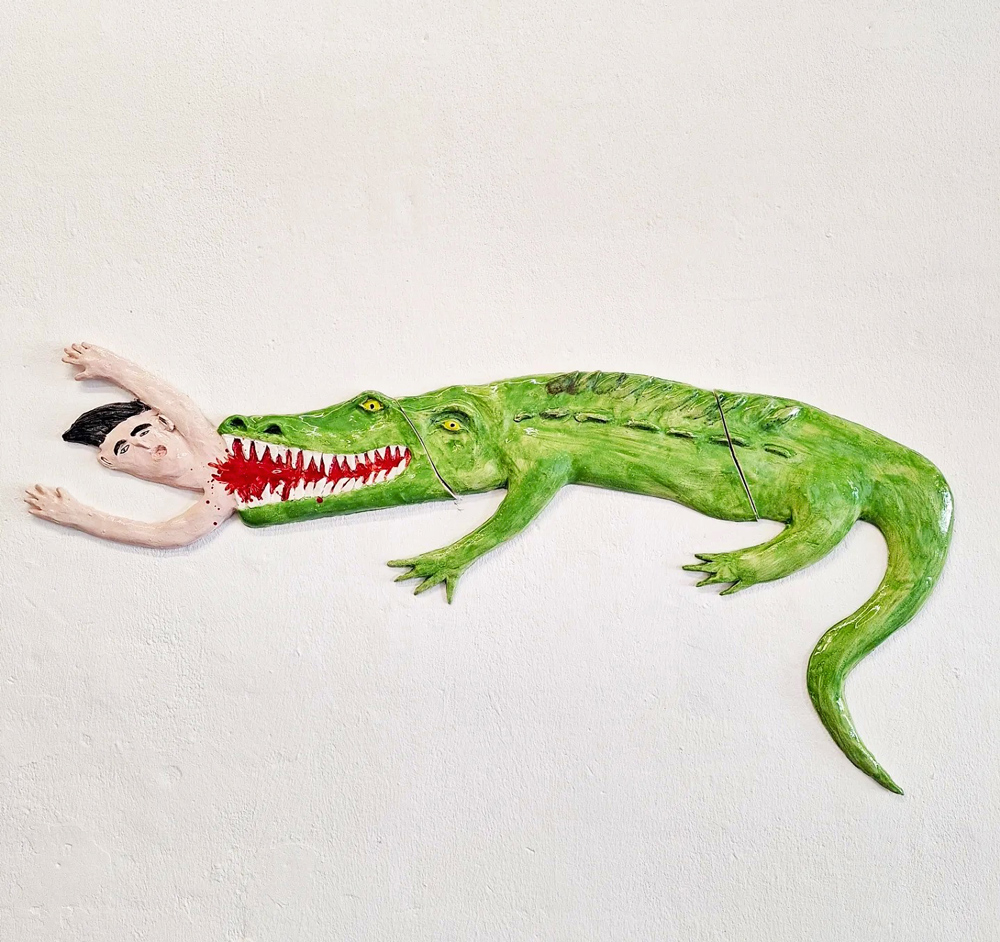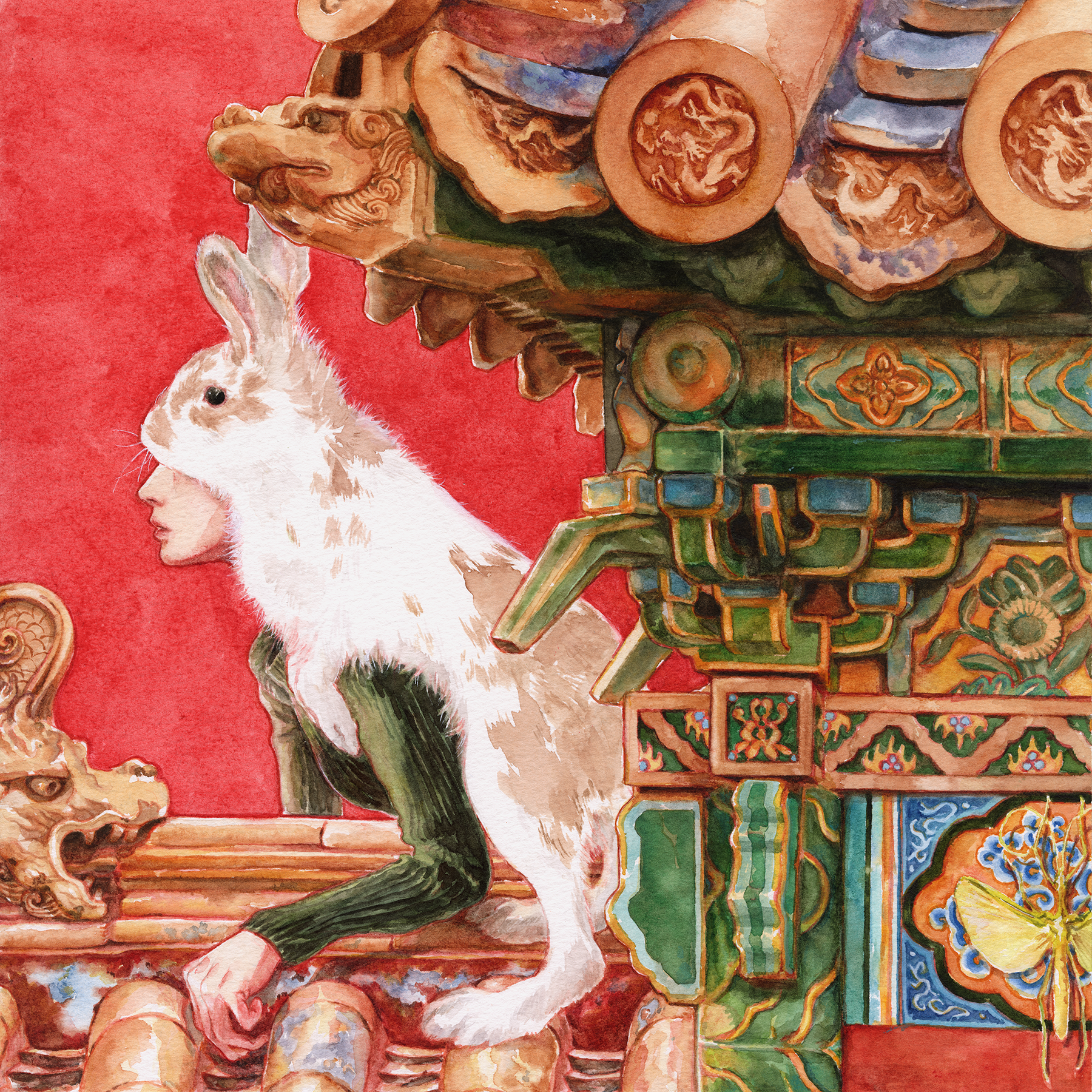Damola conversou com o Format durante uma sessão de fotos de autorretrato no Lumina Studio Loft em Durham, NC, enquanto planejava a produção de seu projeto de filme "Sua presença se espalha para além destas paredes." Visite a página e inscreva-se em sua lista de correspondência para saber mais.
Para ver mais do trabalho de Damola, Confira seu portfólio Format.
Você pode assistir a parte de nossa conversa aqui:
Como começar a trabalhar como fotógrafo
Meu nome é Damola Akintunde. Sou um fotógrafo nigeriano-americano que mora em Durham, Carolina do Norte. Comecei a fotografar em dezesseis, mas mesmo antes de ser fotógrafo, eu estava cursando medicina, tentando ser médico - uma exploração que não estava dando certo.
Sou fotógrafo desde 2016 - também exploro a narrativa visual por meio de outras mídias, como o vídeo. Em um determinado momento, meus amigos precisavam de fotos para seus blogs, para seus diferentes empreendimentos, fotos de formatura, e eu decidi: "Vou pegar uma câmera apenas para explorar o mundo ao meu redor e documentar meus amigos e minha família". Então, esse foi o primeiro tipo de percepção para mim de que essa era uma carreira e uma possibilidade real.
Grande parte do meu trabalho reflete a identidade própria. Ele reflete a ideia de corpo e espaço e serve para mostrar a feminilidade negra e a experiência negra em toda a diáspora.

Contar histórias e a passagem do tempo com uma série de fotografias de autorretrato
Portanto, quando se trata de planejar autorretratos, tradicionalmente, para mim, é algo improvisado. Não faço muito planejamento prévio.
Muitos dos meus autorretratos, especialmente durante a pandemia, eram apenas eu encontrando maneiras diferentes de documentar quem eu era naquele momento - eu meio que perdi aquele período de tempo em que, de outra forma, estaria explorando o exterior, mas ainda posso ter lembranças de como era estar naquele momento.
O processo incluía a criação de estilos, muita inspiração por meio do Pinterest ou de formas não tradicionais, como filmes e música. Sempre que eu tinha a sensação de que precisava me expressar de uma determinada maneira, eu encontrava inspiração em diferentes meios. Então, em meu quarto, em minha casa, eu encontrava maneiras diferentes de montar vários cenários para me documentar. Quando se trata de tempo, ou de documentar o tempo, o que também achei interessante ao fazer autorretratos é que estou literalmente criando um arquivo de mim mesmo.
Essa sessão foi a primeira vez que pude planejar previamente, e meus autorretratos daqui para frente terão um pouco mais de planejamento.
Agora que estou pensando mais profundamente sobre o que quero transmitir em meus retratos, estou planejando me inspirar na composição de outros filmes, videoclipes e outros componentes de narrativa visual. Isso exige que eu me sente e pense sobre a história que quero contar usando cores, enquadramento, maquiagem e beleza, estilo.
Estou sendo mais intencional sobre o que essas diferentes peças invocam para o público e também sobre o que elas representam para mim como pessoa.

Abordagem de retratos através das lentes da psicologia e da antropologia médica
Acredito que o fato de eu ter me formado em psicologia, além de ter uma especialização em antropologia médica, influencia a maneira como abordo a narração de histórias. As aulas, os cursos e os livros que li me ensinaram muito sobre a experiência de ser humano, especialmente no que se refere à identidade própria e à compreensão de quem somos no contexto da sociedade.
Esses cursos também tratavam de cura, e acho que foi por isso que quis ser médico inicialmente. Estou realmente interessado na ideia de curar os outros e estar a serviço dos outros - e então percebi que o conceito de cura vai além da medicina. Ele vive na narrativa visual, na capacidade de ver a si mesmo, na capacidade de ter narrativas que representem quem você é como pessoa, no arquivo da humanidade, em última análise.
Esses assuntos me informaram como alguém capaz de se comunicar com as pessoas e fazer perguntas sobre quem elas acreditam que são e como querem ser vistas.

Vendo a si mesmo e criando uma narrativa por meio de autorretratos
Série "The Kitchen Table" de Carrie Mae Weems invoca muita autoidentidade e autorreflexão para mim. Ela falou sobre a série como se essas pessoas ou essa mulher em seus retratos fossem uma musa ou um personagem, em vez de ela mesma, e isso está realmente me informando sobre maneiras de pensar sobre a criação de personagens em meus autorretratos.
Percebi que meus autorretratos permitem que outras pessoas, especialmente muitas mulheres negras, vejam a si mesmas. Costumo pensar em que parte da minha identidade quero refletir em cada autorretrato e como isso também se encaixa na narrativa geral sobre a mulher negra.
Ela me ensinou a pensar mais profundamente sobre meus autorretratos, não apenas sobre mim como o eu físico, mas também sobre esse personagem que estou criando e que representa diferentes partes da identidade, da autorreflexão e da compreensão de quem somos.

Projetos pessoais como ponto de partida para trabalhos fotográficos comissionados
Muitos dos meus projetos comissionados vieram de conexões com Fotógrafas negras, Diversificar fotose Fotografia de mulheres.
Os editores - quando veem meu trabalho, especialmente por ser focado em retratos de negros - parecem entender que tenho a capacidade de me conectar com as pessoas que eles estão apresentando nessas histórias. Acredito que meu foco na identidade também ajuda os editores e diretores de criação a entender que sou capaz de entrar nesse espaço e trazer uma nova lente e uma nova perspectiva quando se trata de documentar pessoas e garantir que a humanidade delas também seja centralizada.
Não tenho todas as respostas em termos de por que eles me escolhem para fazer determinadas fotos ou criar determinadas imagens para eles. Minha esperança é que eles vejam o trabalho que faço para projetos pessoais e vejam que posso entrar no espaço e trazer segurança e calor para aqueles que estão sendo documentados.

Colaborações contínuas e crescimento artístico
Uma experiência que valorizo muito é com uma mulher negra chamada Aziza, com quem trabalho com bastante frequência. Temos essa prática de trabalhar juntos todos os anos - eu melhoro no meu trabalho e ela fica mais confortável na frente da câmera. Agora temos um relacionamento consistente uma com a outra, e eu tenho essa série em que você pode ver o crescimento de ambas.
Eu realmente aprecio a ideia de ter um modelo ou um tema com o qual você cresce, e também tê-la como amiga e parceira criativa, onde estamos sempre encontrando maneiras de crescer e nos tornarmos mais confortáveis como artistas juntas. Isso é algo que me é muito caro, especialmente com parcerias de mulheres negras ou mulheres negras criativas - encontrar maneiras de nos conectarmos em comunidade umas com as outras.

O poder de criar sua própria narrativa
Pode ser preciso muita energia e vulnerabilidade para estar na frente de sua própria câmera, mas acho muito gratificante poder controlar sua própria percepção, suas próprias narrativas, sua própria capacidade de aparecer no mundo. Acho que todos deveriam se sentir compelidos, em algum momento, seja com a câmera ou com o telefone, a encontrar maneiras de se documentar. Acho que algumas pessoas acreditam que isso é vaidade - as selfies, em um determinado momento, foram ridicularizadas e talvez ainda sejam. Mas acho que é muito poderoso poder dizer: "Isto é quem eu sou e como quero que as pessoas me vejam" e permitir que os outros vejam o que você tem a oferecer e o que você tem como pessoa. Há muito poder no autorretrato e na documentação em geral, e há outros meios pelos quais você pode fazer isso. Não precisa ser retratos - há muitas opções. Também tenho me envolvido com diários em vídeo e diários em áudio.
Estou explorando muito o trabalho em vídeo porque acredito que há maneiras de expandir a imagem única e encontrar formas de torná-la dinâmica. É uma transição, mas estou curioso para saber o que significa contar histórias de maneiras mais dinâmicas.

Conselhos para criadores emergentes: Incline-se para os fracassos
Um conselho que eu daria a aspirantes a artistas ou fotógrafos, e ainda estou aprendendo isso sozinho: você precisa não ter medo de falhar em tempo real.
Como fotógrafo autodidata, tive muitas ocasiões em que não tinha certeza do que estava fazendo. Eu não sabia exatamente as habilidades técnicas para certas coisas que queria fazer, mas isso exigiu que eu tentasse em tempo real, fizesse o que queria e não me importasse em não ter certeza do que estava fazendo. Às vezes, há um elemento de deixar as coisas correrem e esperar pelo melhor, e você é realmente recompensado quando não se inclina muito para os "e se" e, em vez disso, se inclina para a pergunta "o que é possível, o que vem a seguir" da criação. Incentivo todos a encontrarem maneiras de não se importarem com o fracasso, porque esse fracasso acaba tornando você um criativo melhor.

A influência da música no projeto em andamento "Your Presence Spreads Beyond These Walls" (Sua presença se espalha além dessas paredes)
Minha série de autorretratos é, na verdade, inspirada pelo meu projeto em andamento, "Your Presence Spreads Beyond These Walls".
É um curta-metragem e uma série de fotos que capturará minha amadurecimento após a pandemia e durante a pandemia - tentando encontrar meu caminho. Ele terá diferentes oportunidades de construção de mundos para que eu compartilhe diferentes partes de minha identidade e, com sorte, permita que outras pessoas - especialmente mulheres negras - se sintam à vontade para explorar todas as diferentes partes de sua identidade.
Eu criei a frase "Your Presence Spreads Beyond These Walls" (Sua presença se espalha além dessas paredes) em 2020, quando estava sentado pensando sobre essa ideia de quem eu sou fora do barulho. Quem sou eu fora dos limites da sociedade, quem sou eu fora das pressões da sociedade, das pressões familiares.
Isso me forçou a pensar no fato de que a música me ajuda a crescer como pessoa e a me explorar, portanto o projeto é muito influenciado pela música. Parte dele também é influenciado por minha herança nigeriana - estou realmente interessado no movimento Alte na Nigéria atualmente. Também estou interessado em muito do r&b alternativo que está sendo lançado. Portanto, haverá vários atos, em que cada ato representa o espaço que é influenciado por determinados gêneros musicais.
O projeto tem como objetivo me ajudar a entender quem eu sou, mas também encontrar maneiras de me apresentar aos outros e permitir que eles encontrem maneiras de aprender sobre si mesmos e crescer como pessoa.














